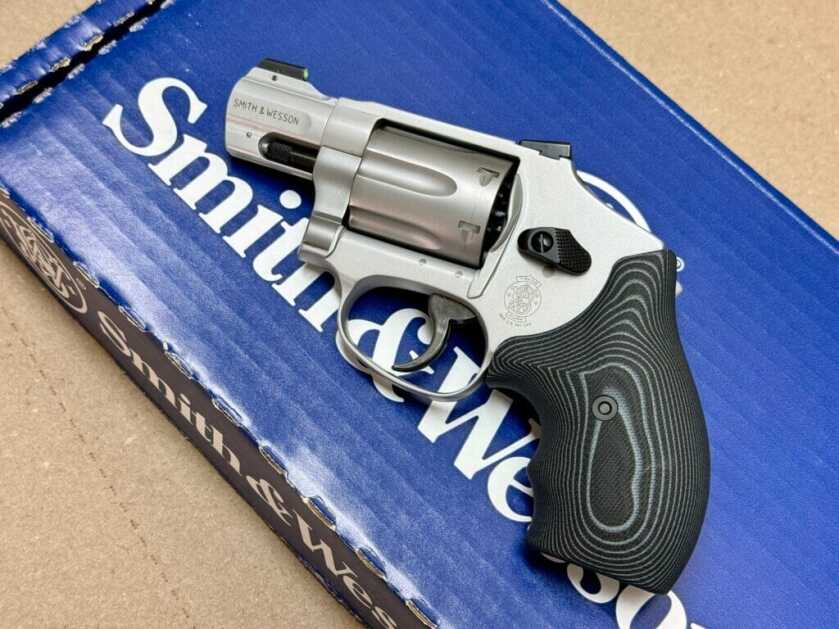
Estimated reading time: 15 minutes
SHOT SHOW EXCITEMENT
Lipsey’s and Smith and Wesson set the revolver world on fire with the introduction of the Ultimate Carry Series. Announced at the 2024 SHOT Show, the Ultimate Carry series consists of a much-improved version of the venerable 642/432 Airweight Centennials. However, to the surprise of many, they also launched an Ultimate Carry in .32 H&R Magnum. To say the Ultimate Carry is an “improved model” is really an understatement.
Table of contents
- SHOT SHOW EXCITEMENT
- THE VISION OF A PERFECT J-FRAME
- FEATURES ON THE .32 ULTIMATE CARRY PISTOL
- “A .32 GUN IN HIS POCKET FULL OF FUN”
- RANGE TIME WITH THE GUN
- ULTIMATE SNUB AMMO
- .32 AMMO BREAKDOWN
- ULTIMATE ACCURACY AND PERFORMANCE
- OTHER THOUGHTS ON THE .32 H&R MAGNUM
- OTHER CONSIDERATIONS
- ULTIMATE CARRY & .32 H&R MAGNUM CONCLUSION
THE VISION OF A PERFECT J-FRAME
The Lipsey’s 632 Ultimate Carry was a collaboration between Jason Cloessner, Lipsey’s Senior Vice President for Product Development, and Andrew Gore, Smith & Wesson’s Handgun Product Manager. Cloessner wanted a J-frame that addressed the complaints all of us have had for years. I have carried a J-frame on a daily basis, for over 40 years, and have shot them extensively. I am all too aware of the deficiencies in the sights, action, and, in some cases, the stocks. With no color contrast between a narrow front sight, and a small and shallow rear sight notch, the sights challenge even the best shooters. The issues with stocks and the trigger/action can be addressed by aftermarket products and a good gunsmith. But it would be nice to not to have these issues!
Over two years of design and testing went into this UC project. For the principal parties, there were multiple trips between Baton Rouge and Springfield. Smith & Wesson not only addressed Cloessner’s initial concept, but they brought several internal designs to the table. The end product is as close to perfection as I could imagine.
FEATURES ON THE .32 ULTIMATE CARRY PISTOL
Cloessner wanted the Ultimate Carry J-frames to be a set of features that could set the stage for future projects. Those features would be key to the success of both the Centennials as well as what may come in the future. These features are:
Sights
The most significant improvement, over the traditional J-frame, is the sights. The UC features a dove rear sight that is similar to the sight found on the 640 Pro. However, the UC sight is slightly taller, and features a deep “U” notch and a serrated face. The front sight is an XS Standard Dot with a green pholuminescent ring and a Tritium insert. The front sight dot is perfectly proportioned to the rear “U” notch. The sights have been specifically calibrated for the 100 grain wadcutter loads.


Action
The trigger, on the UC guns, is significantly better than the normal J-frame. This was accomplished by making improvements in the geometry of several parts as well as using an improved mainspring and trigger return spring. In addition, Smith has enhanced the strength and durability of the UC by using titanium pins for the internal pivot points.
Available on GunsAmerica Now
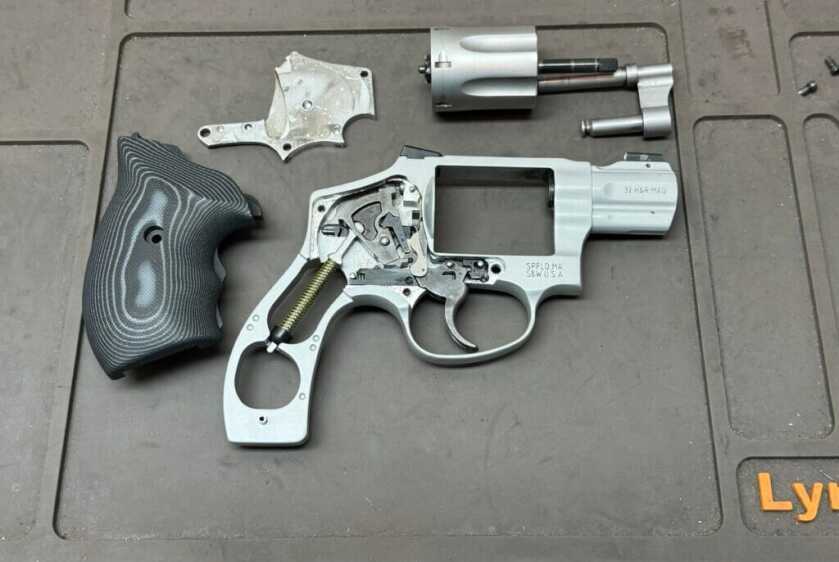
Stock
VZ Grips is an industry leader in G-10 stocks. The company worked with Lipsey’s and Smith & Wesson to develop a set of stocks for the UC revolvers. The new design fills the sinus behind the trigger guard and covers the entire backstrap of the frame. Known as a “high horn” design, this design is specific to the Centennial frame. The design gives the shooter a higher purchase on the pistol and allows for the recoil to be distributed across a larger portion of the hand. In addition, they are durable and improve the pointability of the little pistol.

Endurance Improvements
In the past, alloy J-frames had steel studs that were copper-brazed in place. These studs are critical to the operation of the cylinder lock, trigger, hammer, and trigger rebound block. Should one of these studs break, the gun is normally a total loss. Smith & Wesson gave the UC an enhanced “endurance package” that included titanium pins and improved geometry of some internal parts. When combined with improved springs, the trigger pull, on the new UC, is a substantial improvement.
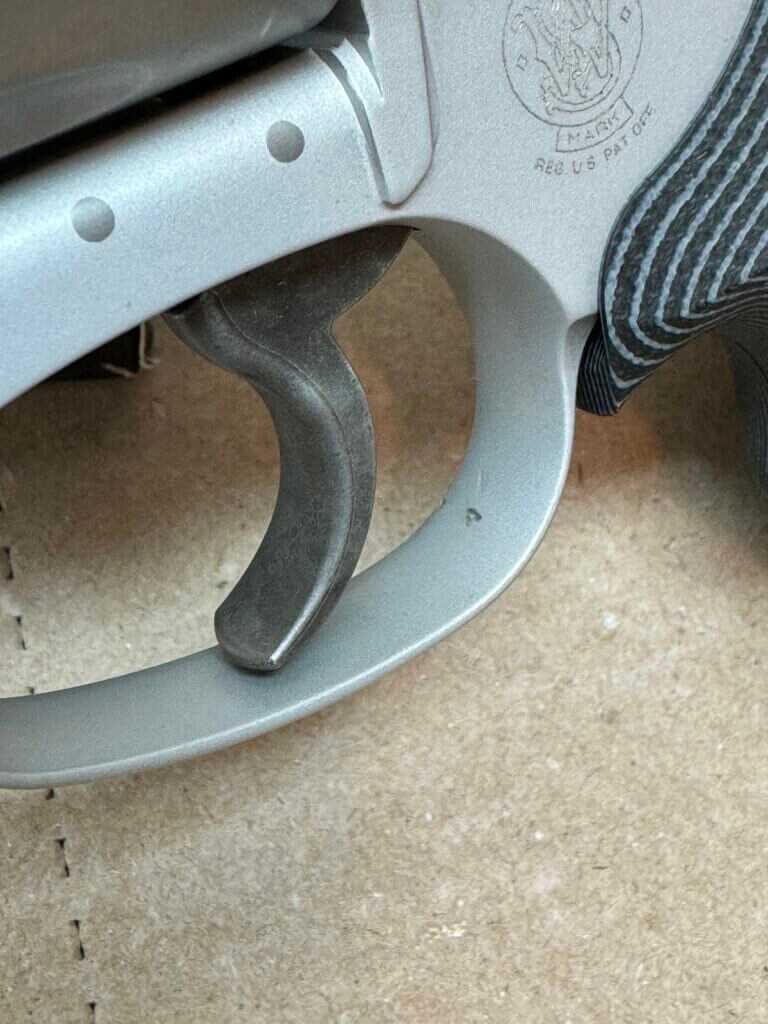
Barrel
The UC features a two-piece barrel that allows for a more precise, and consistent, cylinder gap. The two-piece barrel simplifies production and the shroud height is designed to accept the XS front sight. This is a feature previously found on the more expensive scandium frame revolvers.

Custom Touches
The Ultimate Carry pistols also offer some nice custom touches that are subtle yet important. The leading edge of the cylinder has been nicely beveled, as has the front edges of the frame. The UC is void of any offending sharp edges. Another nice custom feature is the chamfered charge holes. And, Smith has eliminated the hated internal lock!

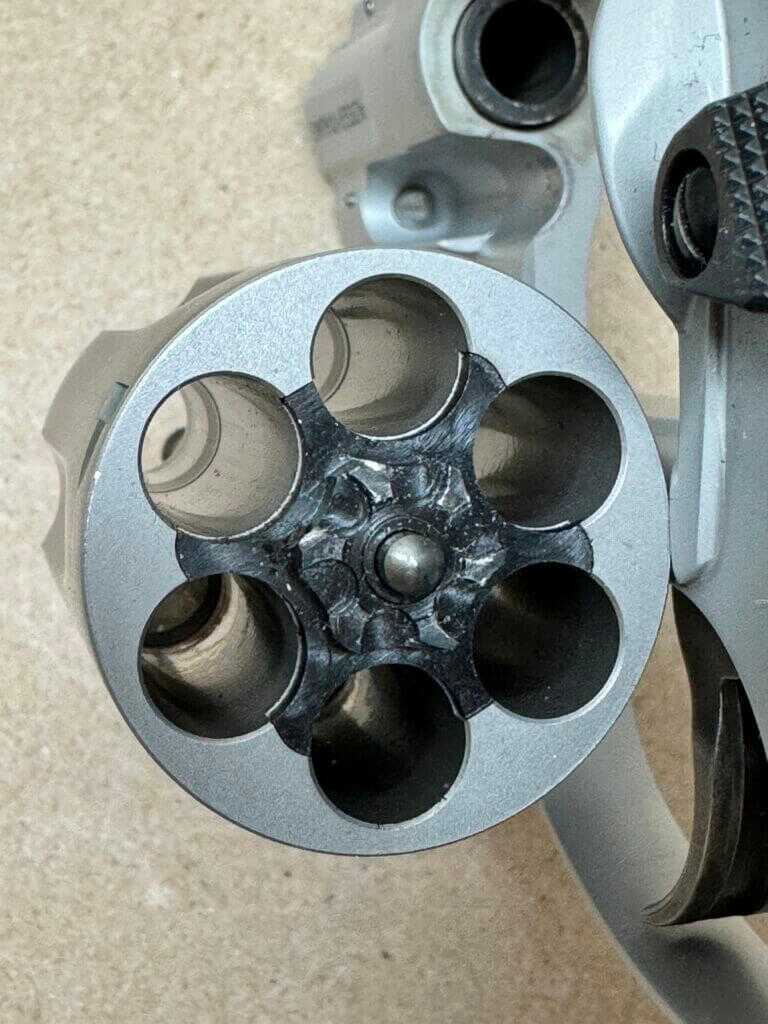
“A .32 GUN IN HIS POCKET FULL OF FUN”
Of course, that is a line from Jim Croce’s 1973 hit song, “Bad, Bad Leroy Brown.” The .32 H&R Magnum was a joint venture between Harrington & Richardson and Federal Cartridge Company. It was introduced in 1984, and was intended to improve the performance of the .32 S&W Long that dates back to the 1800s. One could equate the project to the development of the .357 Magnum. When loaded to Magnum pressures, the .32 H&R Magnum is a fairly hot cartridge with pressures exceeding that of a .38 Special +P load. While some a manufacturers produced pistols in the caliber, it never really took off. Still, the caliber had a small, but loyal, following.
The introduction of the 632/432 in .32 H&R Magnum resulted in a great deal of excitement. The .32 H&R offers significantly reduced recoil when compared to even standard velocity .38 Special loads. In addition, the chambering allows the 632/432 to have a six round cylinder. The Ultimate Carry 632/432 has single handedly resurrected the .32 H&R Magnum and brought it back to the forefront of revolver shooters. Multiple manufacturers have spun up both new and legacy loading for the caliber. And, there is more coming!
RANGE TIME WITH THE GUN
Over multiple range sessions, I was able to test the UC with seven different load. I would like to express my appreciation to those who provided ammunition for this project. After chronographing the loads, I did some informal ballistic testing with previously used blocks of Clear Ballistics 10% gel. Given time, and ammunition, l limited the tests to three rounds fired into bare gel and three rounds fired through four layers of denim. While not shot into virgin blocks, the results still gave me a baseline of data to work with.

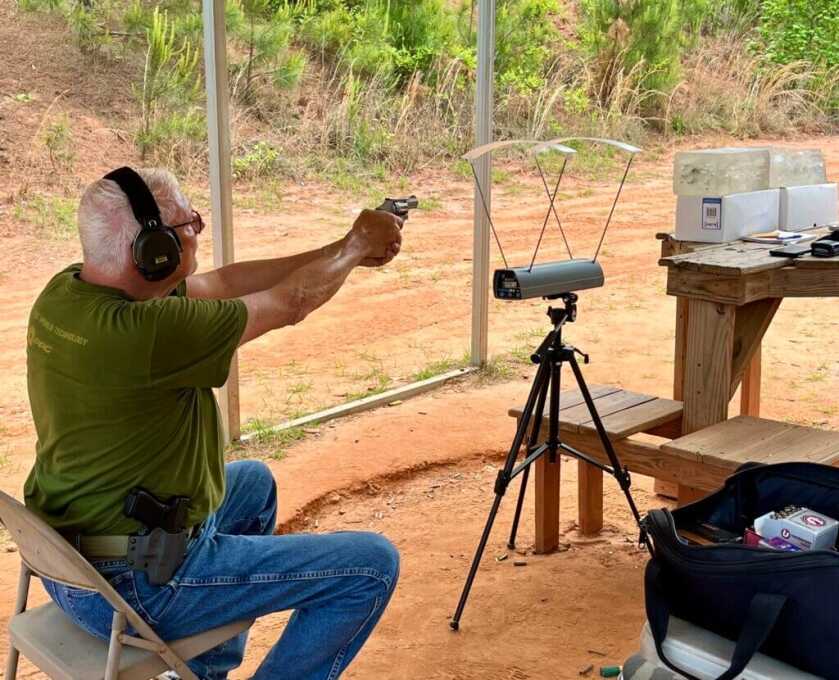
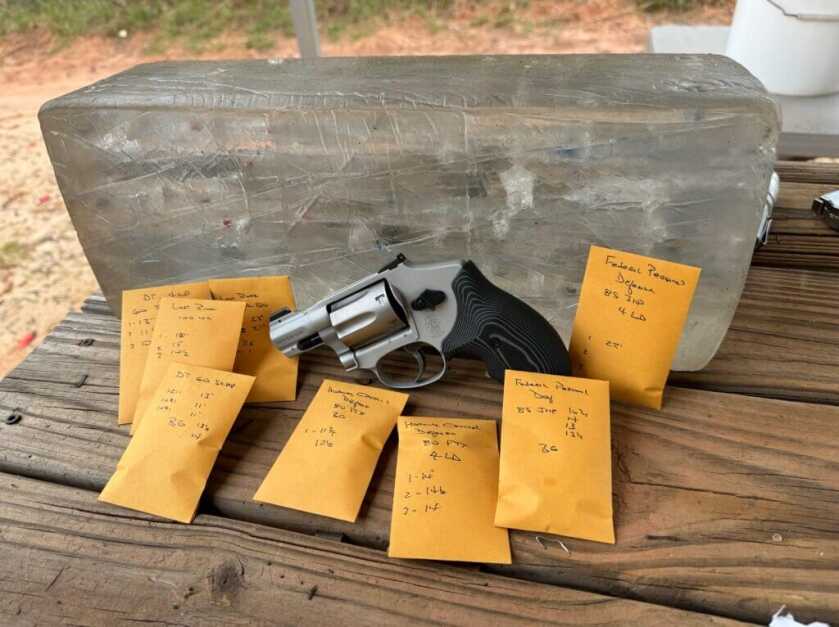
The wadcutters from Lost River and High Desert performed as expected. Both companies use a powder coated bullet that reduces fouling in both the gun and the reloading machines. Velocity and bare gel performance was nearly identical with both loads. Penetration is the most important aspect of terminal ballistics, and wadcutters have become the load of choice for many serious people who carry snubs on a regular basis.
ULTIMATE SNUB AMMO
Both Federal and Hornady offer a .32 H&R Magnum. The Federal Personal Defense load is a 85 grain, traditional jacketed hollow point while the Hornady Critical Defense load is a 80 grain FTX projectile. Both opened up in bare gel to the extent that the bullet design allowed. Through denim, the Federal load failed to expanded or deform. When shot through the denim, the FTX expanded but were asymmetrical and inconsistent.
The High Desert 85 grain is a XTP jacketed hollow point and is designed to be a cost effective practice round. It still performed well in bare gel and expanded to an average of .35” or so. When shot through the denim, as with, the Federal load, it failed to expand but still had good penetration.
The Double Tap 60 grain solid copper hollow point proved to be the biggest surprise of the test. While it had the highest velocity, the light weight made it easy to shoot and the terminal performance was impressive! In both bare gel and through the denim, the copper hollow point had 11.6” in penetration and an average expanded diameter of .50” or better. That is a 56% increase in diameter which is very impressive! For those who require really deep penetration, their 120 grain, hard cast, semi-wadcutter sliced through both gel blocks and continued down range.
.32 AMMO BREAKDOWN
| Smith & Wesson 632 Ultimate Carry | ||||
| Manufacturer | Load | Velocity | Penetration Bare Gel | Penetration 4 Layers of Demin |
| Double Tap | 60 gr. SCHP | 1,103 | 11.6” | 11.6” |
| Double Tap | 120 gr. SWC | 757 | 32” + | 32” + |
| Federal Cartridge | 85 JHP | 959 | 14.3” | 21” |
| Hornady | 80 gr. FTX | 942 | 12.1” | 14” |
| High Desert Cartridge | 85 gr. XTP JHP | 838 | 18.8” | 21.8” |
| High Desert Cartridge | 98 gr. Wadcutter | 809 | 22.1” | 12.5″ |
| Lost River Cartridge | 100 gr. Wadcutter | 808 | 21” | 15.25” |
| Velocity measured from 10 ft./Accuracy 10 yards off-hand | ||||
The photos shown below show the expanded projectiles of the loads we tested.
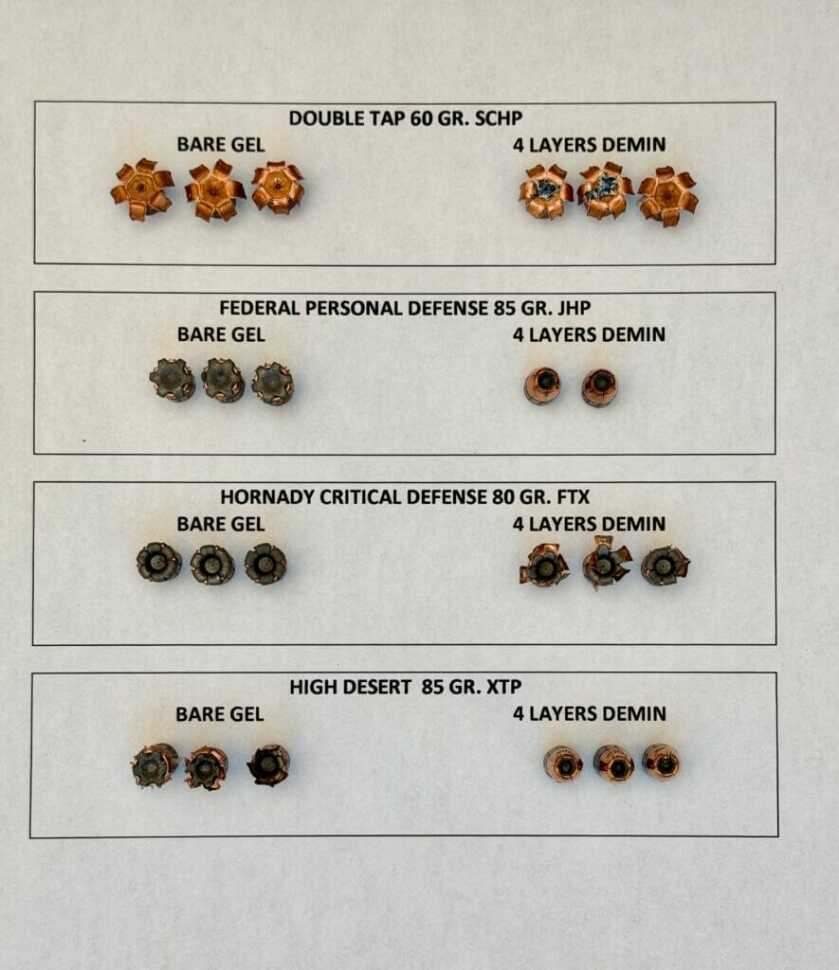
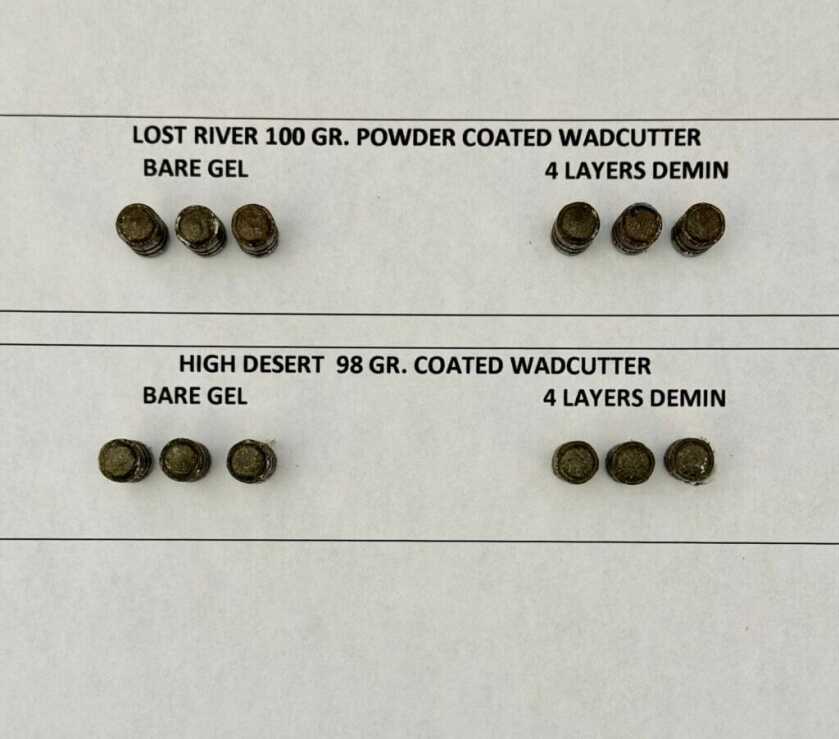
ULTIMATE ACCURACY AND PERFORMANCE
I shot the HiTs Supper Snubby Test that consists of 5 rounds, fired from 3, 5, and 10 yards respectively. Par time for each string of fire is 3 seconds, 5 seconds, and 8 seconds respectively. I should note that the 3 yard line is fired using the strong hand only, so 5 shots in 3 seconds is rather spicy. The drill is shot on a B-8 repair center and scored using the ring values on the target. It is only shot once for score and is normally shot cold. My score with the 632 UC was a 140/150 or 93%. I dropped one point at the 5 yard line and pushed a couple of shots at 10 yards.
I then stepped back to the 25 yard line to see what I could do with my aging eyes. I was able to keep all five rounds of the Lost River wadcutter on the B-8 with a score of 41/50. I can assure you I could not have shot this well with any of my other J-frames. The combination of great sights, proper stocks, and a good trigger really made a difference. The reduced recoil of the .32 H&R cartridge was an added bonus.

OTHER THOUGHTS ON THE .32 H&R MAGNUM
The UC is truly a perfect J-frame in almost all aspects. Words cannot really describe how excellent the new sights are. Smith & Wesson and XS Sights hit it out of the park. It is amazing what can be accomplished when you can really see the sights! For those who find that the VZ stocks don’t fit their hand well, they can be swapped out for a number of other options. For those who are interested, I suggest taking a look at Hamre Forge, Hogue, or Precision Gun Specialties.
HKS Speedloaders offers their 32-J speedloader that is compatible with the 632 UC. For more concealability, I like Tuff Products Quickstrips. They are available in both six and either round versions and in black or orange.
OTHER CONSIDERATIONS
I will say that the 632 UC has made me consider adopting the little .32 as my daily carry. I have been carrying a 642 (.38 Special) for over 40 years. However, the reduced recoil, sixth round, and impressive ballistics has my attention. For pocket carry, I have been using Bulman Pocket Pal from Bulman Gunleather. The Pocket Pal is a kydex holster that is molded kydex holster with a Polysuede on the outer side that grips the inside of the pocket. In addition, the rig has front and rear retention hooks and is molded to be compatible with the sights of the UC. The holster also has a cylinder cutout to reduce overall bulk. It is also available as a branded product from American Fighting Revolver.
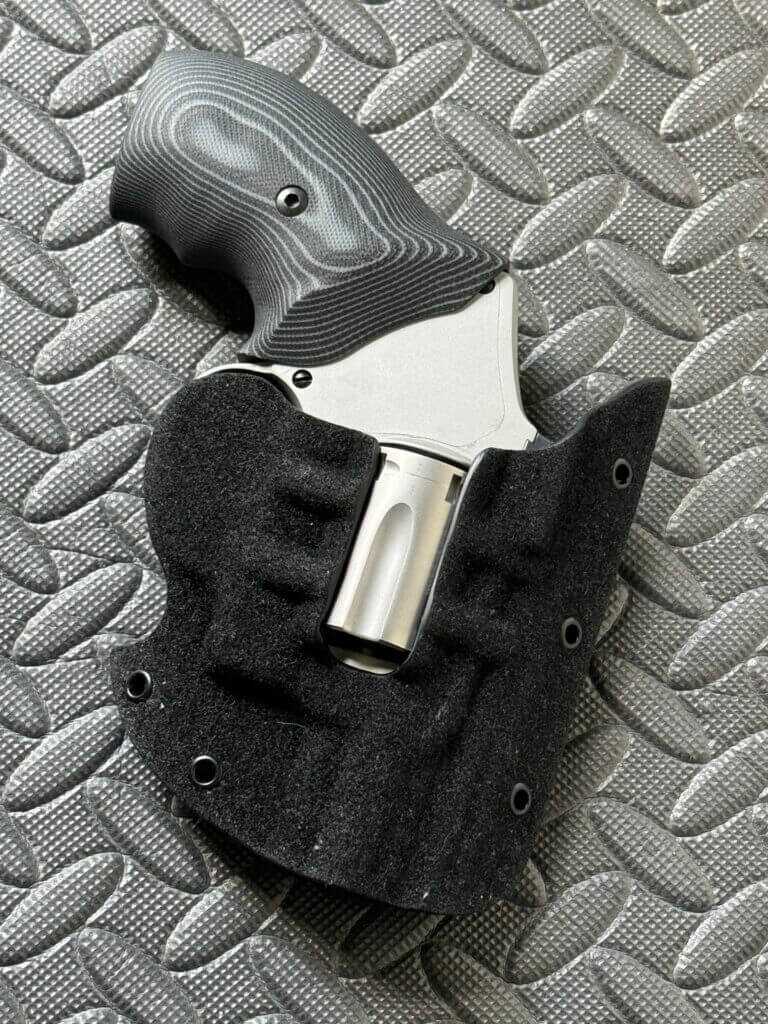
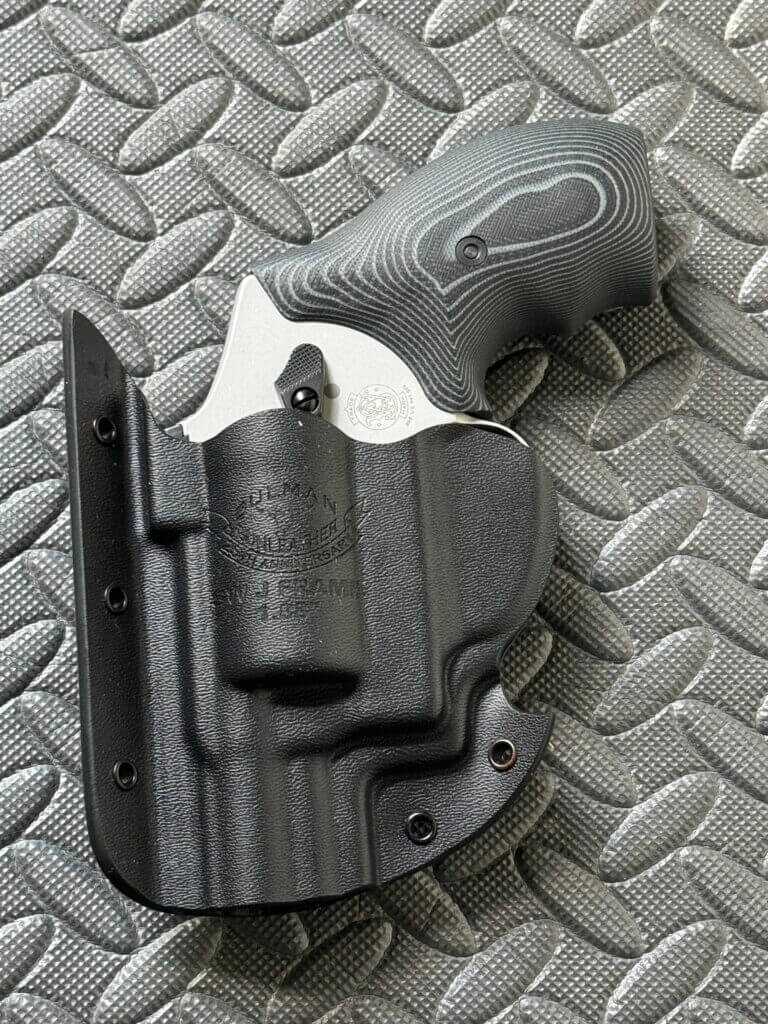
Recently, I have also used a neat inside-the-waistband holster from Garrity Gunleather. The holster is nicely molded and provides excellent retention. An insert ensures the mouth of the holster remains open for easy reholstering. The wider profile reduces the chance of the holster pinching the user, especially when seated.
READ MORE: The Sig Sauer M18 Comes to California
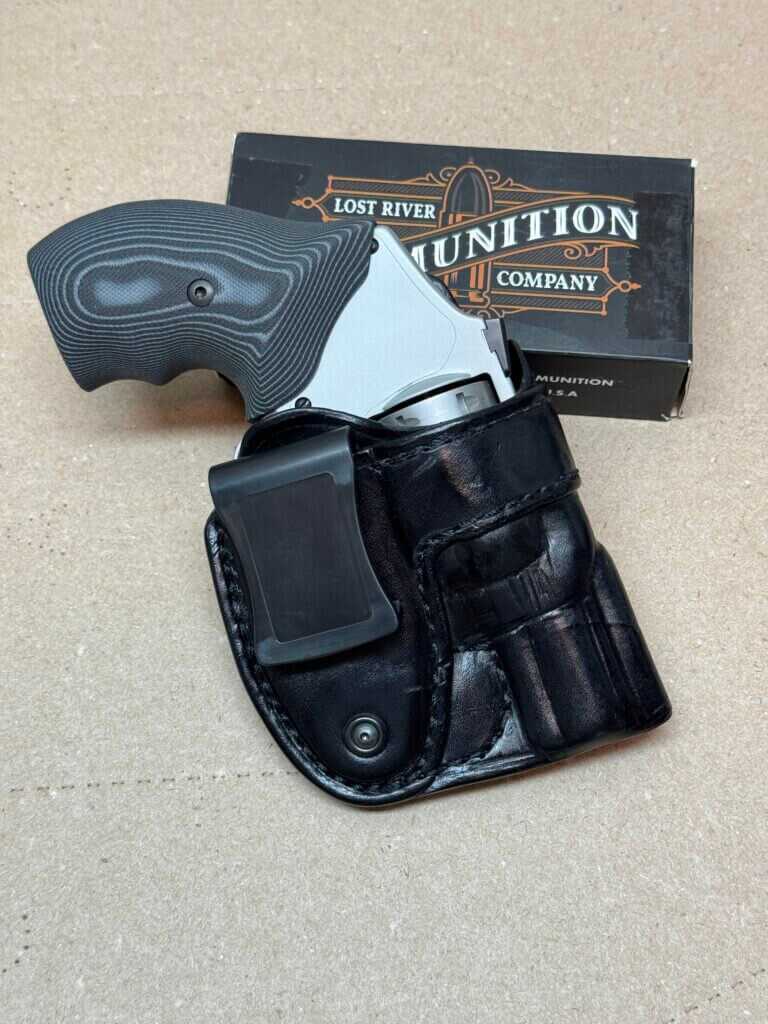
ULTIMATE CARRY & .32 H&R MAGNUM CONCLUSION
As I write this, the Ultimate Carry pistols have been shipping for approximately 3 months. To no one’s surprise, they have been hard to come by as demand has outpaced supply. The good news is production is ongoing and availability will only improve. The entire project has exceeded expectation and there is more to come. As Jason Cloessner summed it up like this. “If you are looking for your first small frame revolver, the UC is ideal. If you already own a J-frame (and no one who is a snub fan owns only one) the UC features will make you want to upgrade!” It is that good and more!
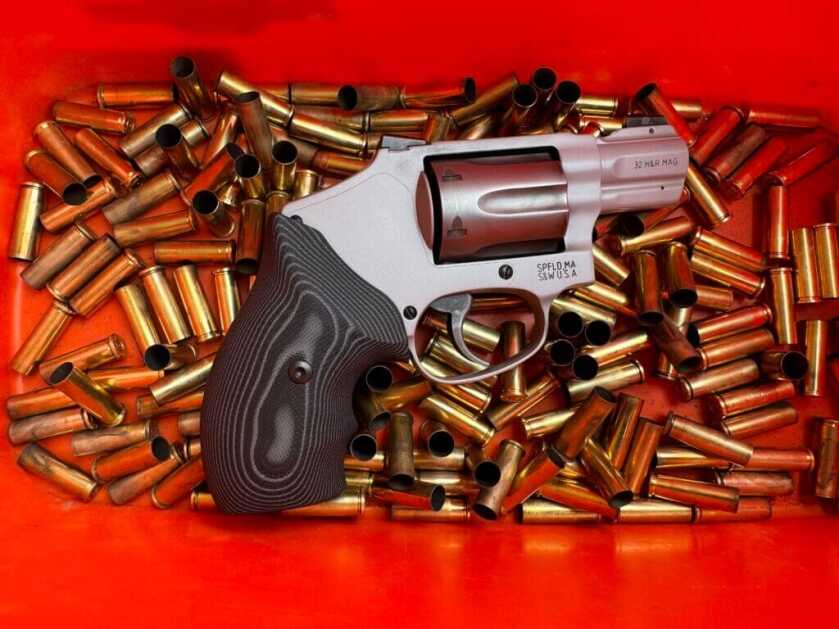
For additional information, click HERE.
| Smith & Wesson 632 Ultimate Carry Specifications | |
| Caliber | .32 H&R Magnum |
| Capacity | 6 Rounds |
| Barrel | 1 7/8” |
| Front Sight | XS Tritium/Green Dot |
| Rear Sight | Dovetailed Black “U” Notch |
| Weight | 16 oz. |
| Grips | VZ G10 High Horn Boot Grips |
| Action | Double Action Only |
| MSRP | $759.99 |
*** Buy and Sell on GunsAmerica! ***

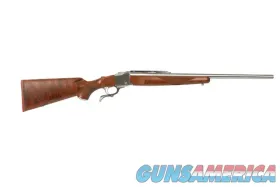
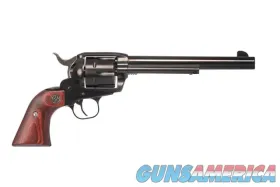
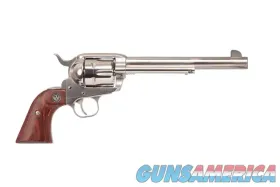
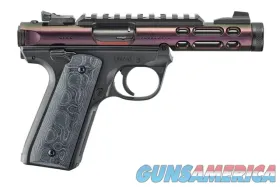



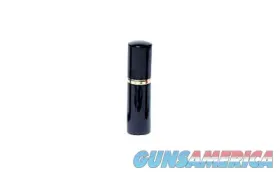

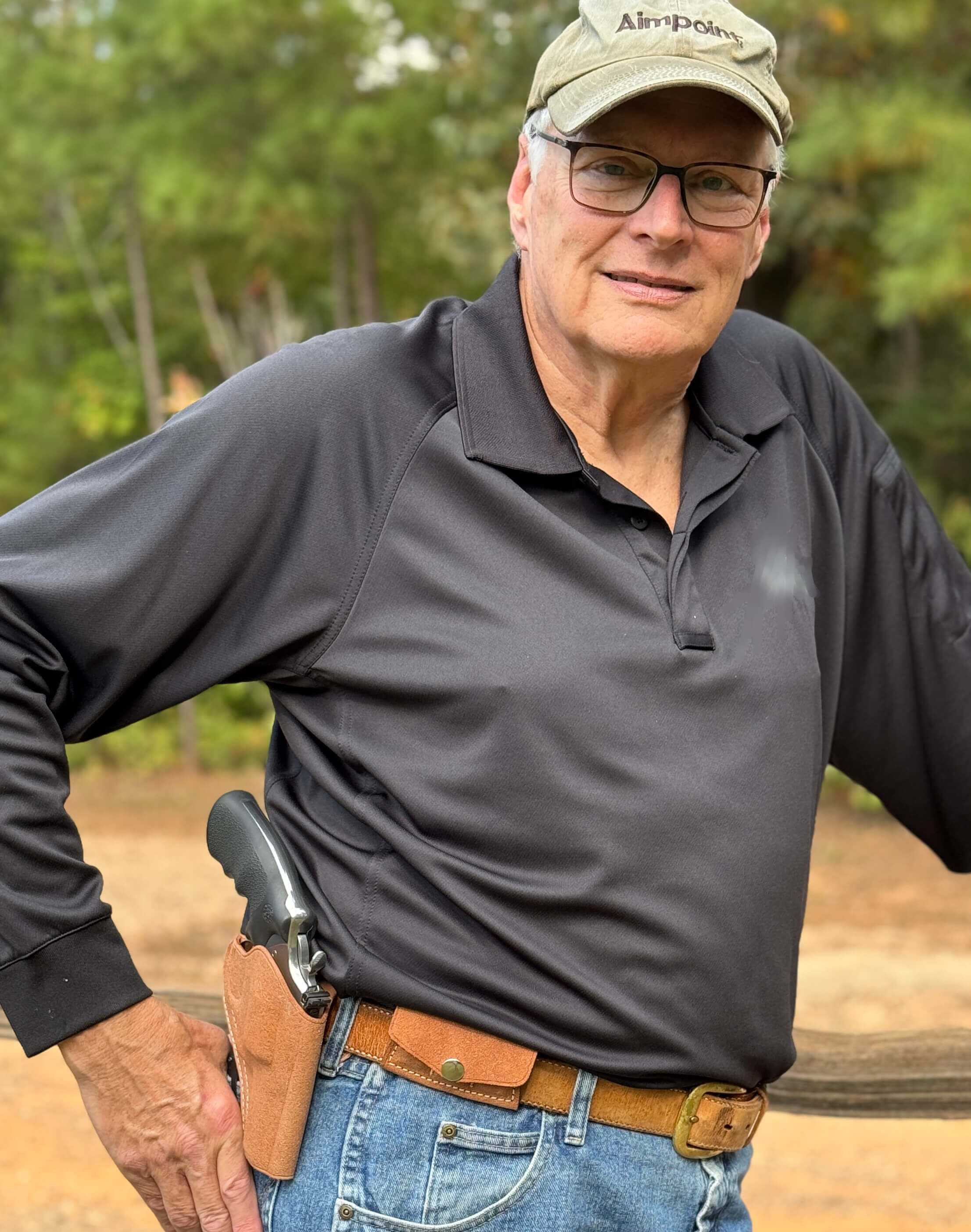
After reading this article I had to laugh. “The Ultimate Snubby”. Like S&W invented something new?! Charter Arms has had 32HR Mag snubbies on the market for years, in a variety of models. I own three of them in steel and alloy, and with factory DAO hammers and without. And all 3 cost me less than what you’d pay for a single 632 based on current prices. Quality wise, all 3 are VERY accurate and I’ve never had one fail to go boom over years of range time. Revolvers have been around for over a hundred years, it’s a proven simple design.
I love my pair of 642 but SW is definitely late to the game with the 32HRM
Fully detailed article. Now I don’t have to shoot mine to find out about it.
🤓🤓🤓🤓
Nice, but I’m happy with my Ruger LCR in .327 Federal.
It’s “Got a .32 gun in his pocket FOR fun.”
I fixed it. Thanks
Proofreading is a lost rat.
Looks good. And your comment about a J-frame fan owns more than one is right on. I own four. Also, I solved most of the problems with purchase of a Smith & Wessen J-frame with three-inch barrel. One problem not mentioned in your article is reloading. The ejector rod is too short to efficiently remove spent cases. The three-inch solves that problem. Other is grips. A two fingered grip is not good no manner how you gauge it. Swapping the grips out for S&W M60 magnum grips solves that problem. Your new gun still has these problems. I do like an additional round but will opt for more efficient reloading and much, much better grip.
I had no issues with ejectio as long as the pistol was vertical and the proper technique was used.
.32 h&r is a excellent round for low recoil. I played with a couple ruger sp101s with 4 and 3 inch barrels and handloaded 100 php from the now defunct rainier bullet company. this little Smith looks like a good edc. especially without the Hillary hole.
In this age of modern manufacturing which is mostly automated…how frigging hard is it to set up cutting dovetails as part of the machine process? What would it add to the cost? $3.95? So put a cap in the slots and leave sight selection to the consumer. This is what Pisses Me Off about these manufacturers.
Beautiful revolver. I want one. My question, though, is why not .327 Federal Magnum? Ruger has several snubbies in .327. You could always fire the .32 magnum in a .327 if one so desired. Stay safe. j
The pressures the .327 Fam generates are too high for a J frame. Plus the round is pretty brutal on small guns, even the LCR.
S&W did make a .327 on the 640 Pro Series platform. When the round first came out, it was late getting to market. Smith was faster getting the guns out, then the ammo makers. So sells were bad and in a less than two years the 327 Pro Series was droped from production.
Mine shoots great and I regularly shoot 50 to 100 rounds, and find it much nicer than 38 Spl in a Model 36.
“a 32 gun IN his pocket for fun…”
Fixed. Thanks 🤓🤓🤓
I was going to ask why the 327 magnum wasn’t mentioned, but Nick beat me to it. I suppose it takes away the recoil benefit, and may challenge the dimensions and weight with 45 ksi vs 21 ksi cylinder pressure.
However, I don’t understand the titanium pin discussion. Titanium is for weight and corrosion resistance. Titanium is NOT stronger than steel or stainless steel, and certainly is no where near the strength of high nickel super alloys. Titanium is also not excellent as a wear surface. If pin breakage was really the issue, titanium is not the solution. Either use a superior material, or make the pins replaceable (seems most preferable). S&W gave you a BS story.
Sounds like a very nice J frame. I’ve had a model 60 for most of my adult life and although I now tote “Tupperware” for EDC, I have no problem running the little .38 even with +p+. Nice write-up as well, but you may want to review Croce’s lyrics to the song you referenced. There’s a lot of us Old Timers hereon who have listened to those tunes for a lifetime.
Yep, I noticed the misquoted lyrics, too. That song was big when I was in high school, so that says it all, lol.
I should have looked it up instead of relying on my memory. 🤓 I’ll get it fixed. Thanks for pointing it out.
Rob
Why no mention of .327 Federal Magnum? It’s also a niche cartridge but a chambering therein would still give the ability to shoot .32 H&R as well.
I think they are afraid the guns won’t be able to handle the higher power of .327 magnum (Charter Arms apparently had the same concerns), but like you I wish they would figure that out.
My first .32 calibre gun was a Savage 1907 semi-auto. It was 60 years old when I bought it and had some pin issues, so I returned it. I had shells left over and they sat in the arsenal for years but eventually found new guns to have a home with. My next .32 was/is a S&W.32 long 3″ I frame which was my constant companion from the early 70s to the late 90s. I carried it everywhere especially in the Idaho and Nevada wilderness areas. While the country is not known for huge predators it does provide homes for lions and rattlesnake’s. I felt totally secure with the gun and never had to fire a shot in a defensive situation but had I met up with anything big I would have been in a world of hurt. It was and still is one of the most easy, accurate guns to shoot. By late 1990s I was introduced to a S&W 331 in .32 HR mag. As a small gun it’s lightness, aluminum frame with a Scandium cylinder and steel insert barrel has been my main carry piece. The gun has been ‘lost’ dozens of times over the decades only to be found in my pocket. The lightness and small size makes it easy to misplace. With the coming of the H/R mag I thought I needed a bigger frame gun. Something with a longer barrel and adjustable sights. The answer was a S&W model 16-4. I took it to field with me but the reality is that for easy packing it was just a bit large for the calibre. It has a 4″ barrel and the blue finish is like looking into a deep black hole of water. The gun was basically too pretty to even carry. I fired about 8 rounds and it has just lounged in the safe for nearly 20 years. I was out to lunch when the .327 Fed Mag was brought on board and I missed the two years that Smith was making them. Now they are almost unobtanium. When they come through the auction sites they can sell between $1500-$1800. I had to settle for a Ruger SP101 4″. I haven’t fired the gun after 3 years. The trigger pull is fine but the hammer is almost impossible to cock and fire in single action because of the heavy spring. It’s better than nothing but again, the gun is over built for the cartridge. I have S&W J frame 3″ 357 magnums that are relatively light, compact and have hammers. I may be too old for the era now but a hammer and firing single action for me is a fun way to shoot, especially target practicing. The hammerless guns in reality are close range defensive weapons. The world we live in, especially the US has never been perfectly safe but todays environment in beyond the pale for those who have lived here beyond 50 years. I get that. But, while I carry 24/7, I have never had an incident where I needed a gun for defensive purposes. Those times could change so like the old Boy Scout motto, Be Prepaired. With the .327 mag, which as everyone knows, can fire all of the other .32 fodder, is there a reason that a small J frame 3″ with adjustable sights (and a hammer) or modified hammer couldn’t be produced. I’m not sure I would buy this new offering in .32 HR since I have the .331. The .331 is perfect. I just need a nice small Smith in .327 and I can put what I like, any of five different rounds according to how I feel at the moment. I like Ruger guns, especially rifles, but the revolvers…I have trouble developing a love affair with them. Like a girl who is very nice, even pretty but overweight. Perfection falls back into the lap of Smith & Wesson. I can modify the 16-4, but it is still huge compared to my model 60s 3″ 357 mags. What’s a boy to do? (or old man for the purists out there)
I would love to see a model 60 3” with 6 shots, an alloy frame, decent sights and yes, a hammer for SA shooting in .327 Federal. Maybe this (article subject) offering is a test of the waters to begin and in the case of S&W and .327 Federal, resume production on such an item. It is understandably a niche cartridge as I previously mentioned but all .32’s including the H&R have been, at least in my lifetime. To address some of the other replies, especially regarding SAAMI pressures, I think that with modern metallurgical technology and finite element analysis there is absolutely no reason a safe and reliable revolver couldn’t be developed on the J-frame S&W.
The pressures are too high for a J frame.